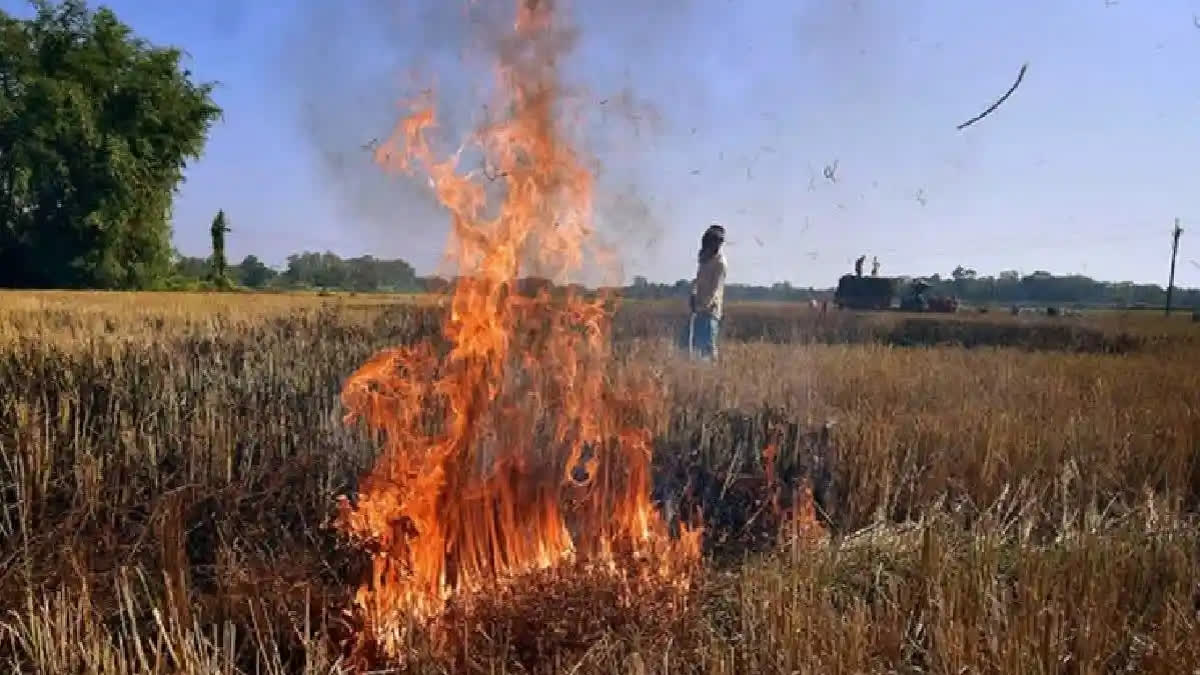New Delhi: The Ministry of New and Renewable Energy (MNRE) has decided to set up biomass briquette and pellet manufacturing plants to fight the perennial pollution problem that takes place due to stubble burning in Punjab and Haryana. An official from the Ministry of New and Renewable Energy said that the biomass programme of MNRE aims to support the setting up of biomass briquette and pellet manufacturing plants and to support biomass (non-bagasse) based cogeneration projects in industries in the country.
“The broader objectives of the scheme are to reduce stubble burning by utilising surplus agricultural residue, to provide an additional source of income to farmers through the sale of surplus agro residue and to enable better environmental practices and reduce pollution,” the official said. The MNRE will also provide central financial assistance to project developers and service charges to implementing agencies and inspection agencies for setting up briquette and pellet manufacturing plants and biomass (non-bagasse) cogeneration projects in industries.
According to an estimate, every year about 22 million tonnes of paddy straw is burnt in Punjab and Haryana. “Since last few years, Delhi and NCR regions have been facing heavy pollution levels and getting covered under the blanket of smog in the month of October-November after the harvesting season,” the official said. Stubble burning in fields emits a large amount of ash, soot and unburnt carbon into the atmosphere, which is the real cause of air pollution and elevates the Particulate Matter (PM) 2.5 and PM 10 levels in the atmosphere.
Farmers burn stubble as they find it the cheapest, quickest and easiest means to prepare the land for the next crop because of the short time available. Stubble burning in fields also reduces soil fertility by killing the critical bacterial and fungal population. Agro residue is an untapped resource that is available in huge quantities, estimated at around 250 million metric tonnes (MMT) annually.
The official said that when agro residue-based fuel, in the form of pellets, is utilised in coal-fired power plants, it burns completely in the power plant and ash emitted from its combustion gets absorbed in an ElectroStatic Precipitator (ESP), which prevents air pollution while generating power from it. “Most power plants in India are running on coal. To reduce greenhouse gas emissions from its coal-based thermal power plants, the power plant intends to utilise agro residue-based pellets and torrefied pellets, along with coal for power generation through biomass co-firing, which is a technology recognised by UNFCCC to mitigate carbon emission,” the official added.
The official further stated that the Ministry of Power is also implementing a National Mission on the use of biomass in coal-based thermal power plants known as the SAMARTH (Sustainable Agrarian Mission on Use of Agri Residue in Thermal Power Plant) Mission. “Under this National Mission, a full-time body namely the Mission Directorate has been constituted, which is coordinating and monitoring the overall policy implementation and the targets of the National Mission. The duration of the proposed National Mission would be a minimum of five years,” the official said.
- " class="align-text-top noRightClick twitterSection" data="">
Read more: Punjab Clocks 634 Fresh Farm Fire Cases, Police Say Over 1,000 FIRs Registered



